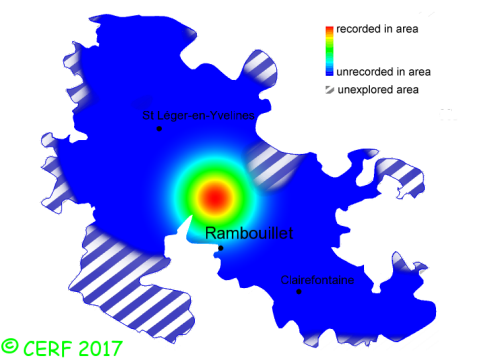|
Tephrocybe confusa (P.D. Orton) P.D. Orton
|
New classification: Basidiomycota/Agaricomycotina/Agaricomycetes/Agaricomycetidae/Agaricales/Lyophyllaceae
Former classification: Basidiomycota/Homobasidiomycetes/Agaricomycetideae/Tricholomatales/Tricholomataceae/Lyophylloideae/Lyophylleae
synonyms: Collybia confusa
edibility : unknown edibility
|
|
|
The cap is brown-ochre to clay-brown when dry, convex then flattened, with a central umbo; its margin is striate when moist.
The cap surface is smooth, not viscid nor sticky.
The stem is same colour as cap, hollow, widening towards base, without ring.
The flesh is whitish, unchanging; its taste is faint, of cucumber, or of rancid meal; the odour is faint, also of cucumber or of rancid meal;
its texture is fibrous.
The gills are dirty white to pale grey, adnate, crowded (nb of gills per 90° ~ 11 ).
The spore print is white. This species is saprophytic.
It grows on the ground, in coniferous and mixed woods.
The fruiting period takes place from September to November.
| Dimensions: | width of cap approximately 2 cm (between 1 and 3 cm) |
| | height of stem approximately 5 cm (between 3.5 and 5 cm) |
| | thickness of stem (at largest section) approximately 5 mm (between 3 and 7 mm) |
Distinctive features : ochre-brown to clayey-brown cap; stem concolorous to cap; taste and odour of rancid meal or cucumber; in coniferous woods
Tephrocybe confusa is rare and confined in the forest of Rambouillet, and is quite rare, more generally speaking
.
|  | | Above : distribution map of Tephrocybe confusa in the forest of Rambouillet |
|
page updated on 14/01/18
